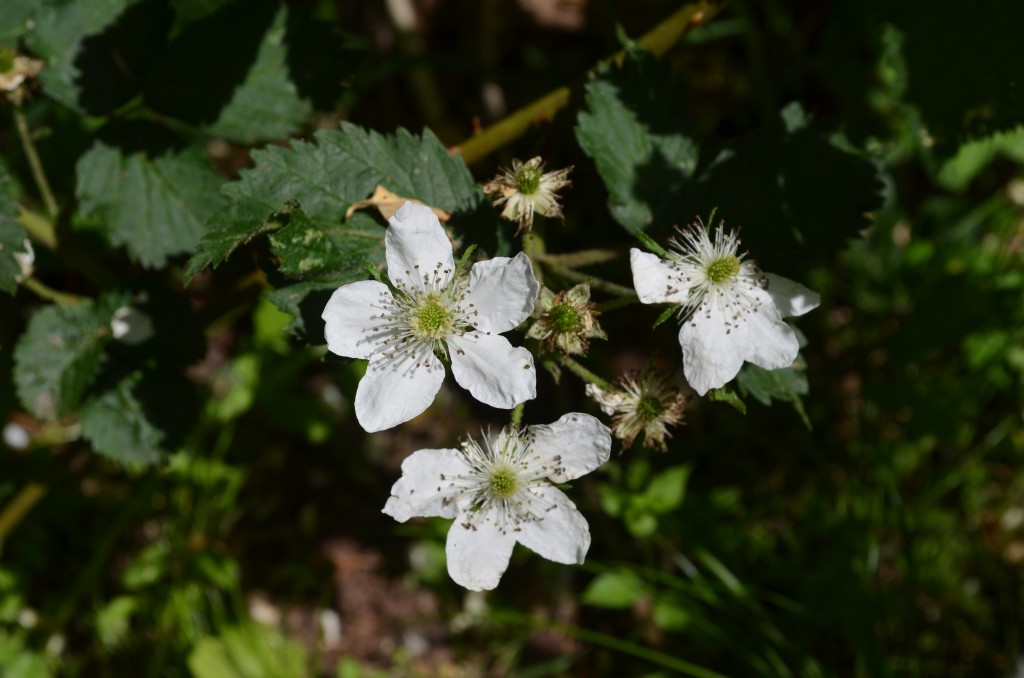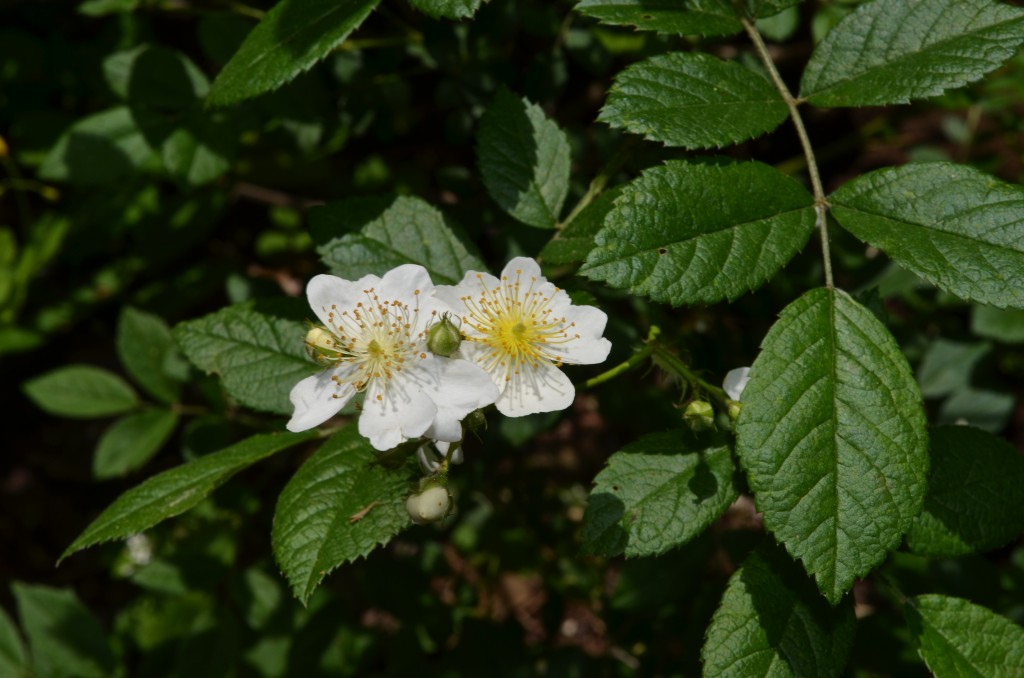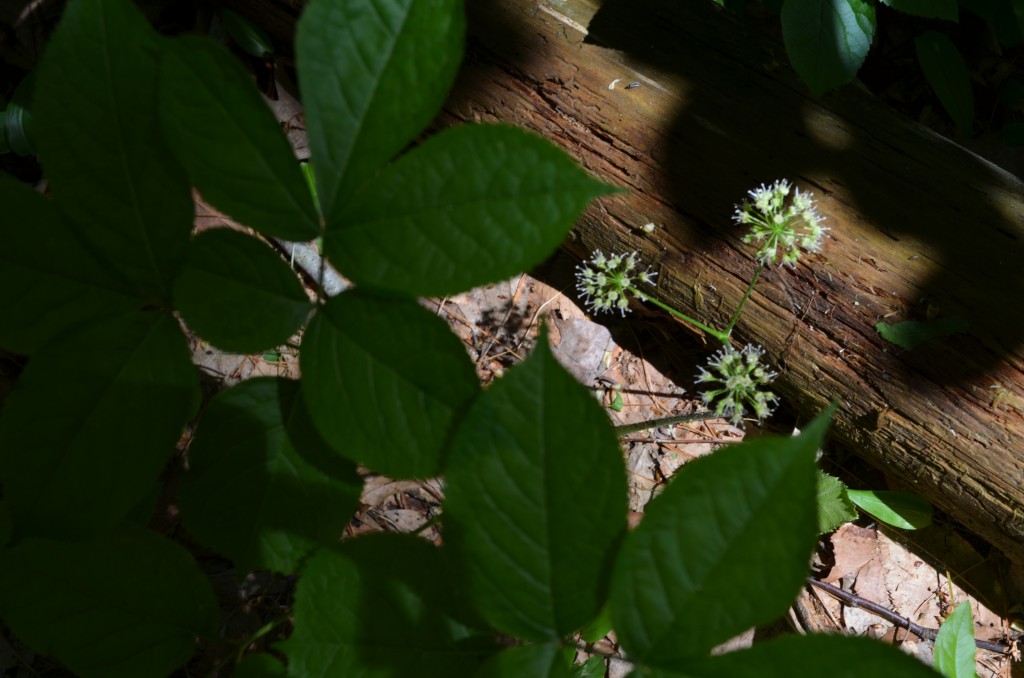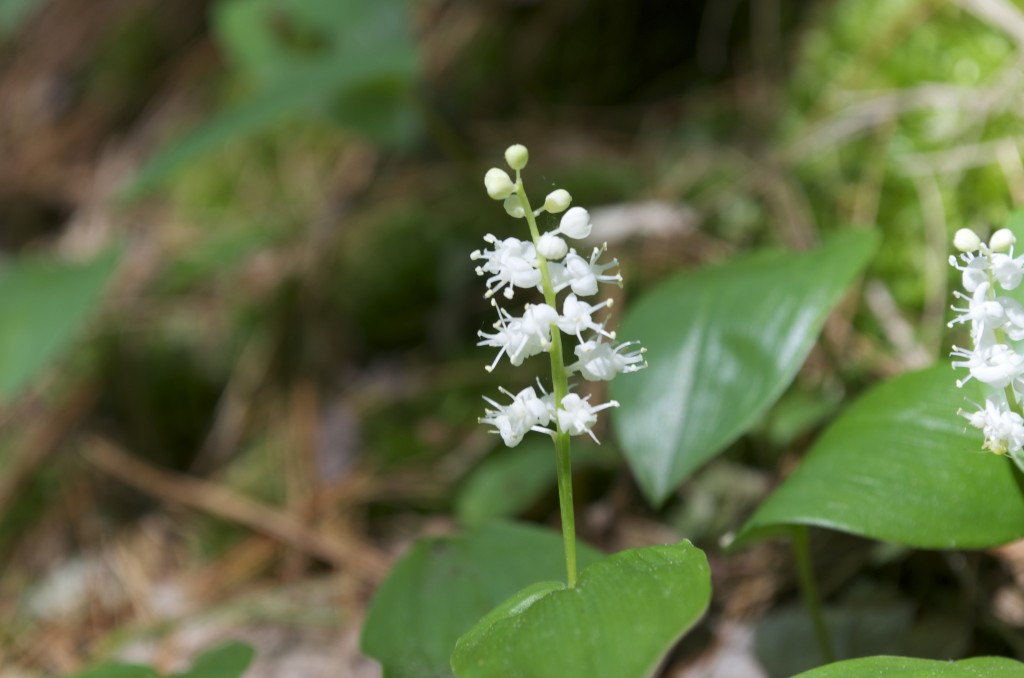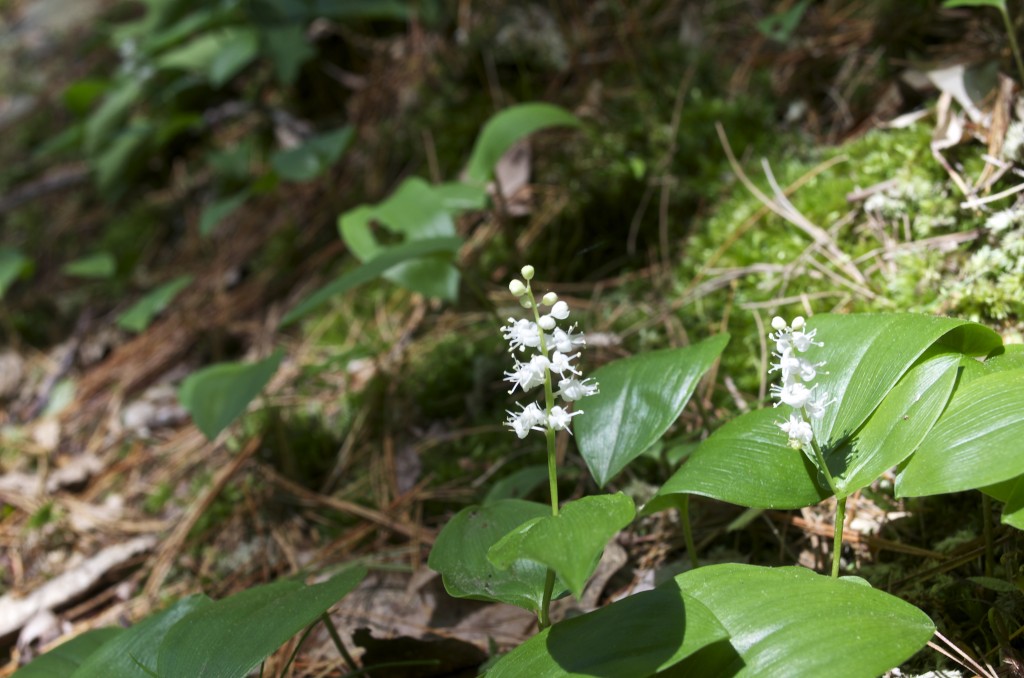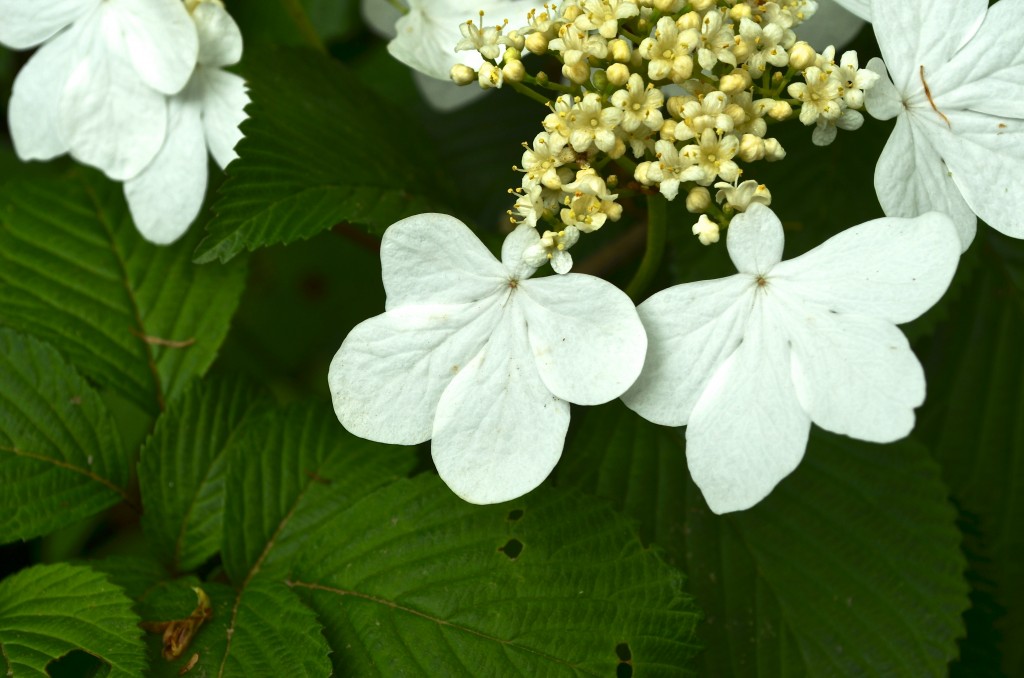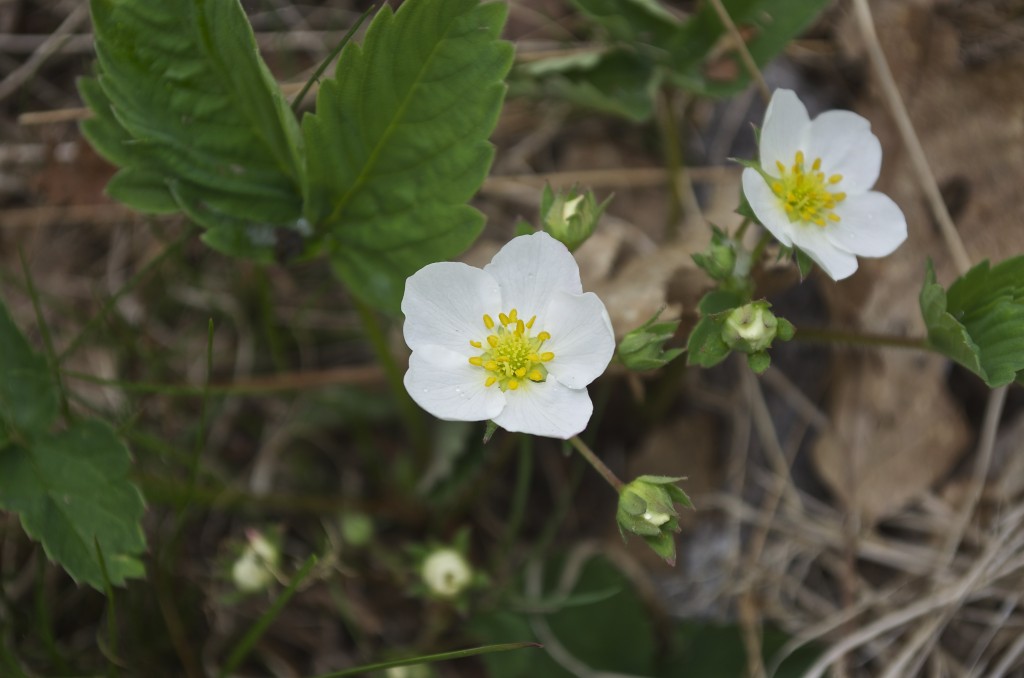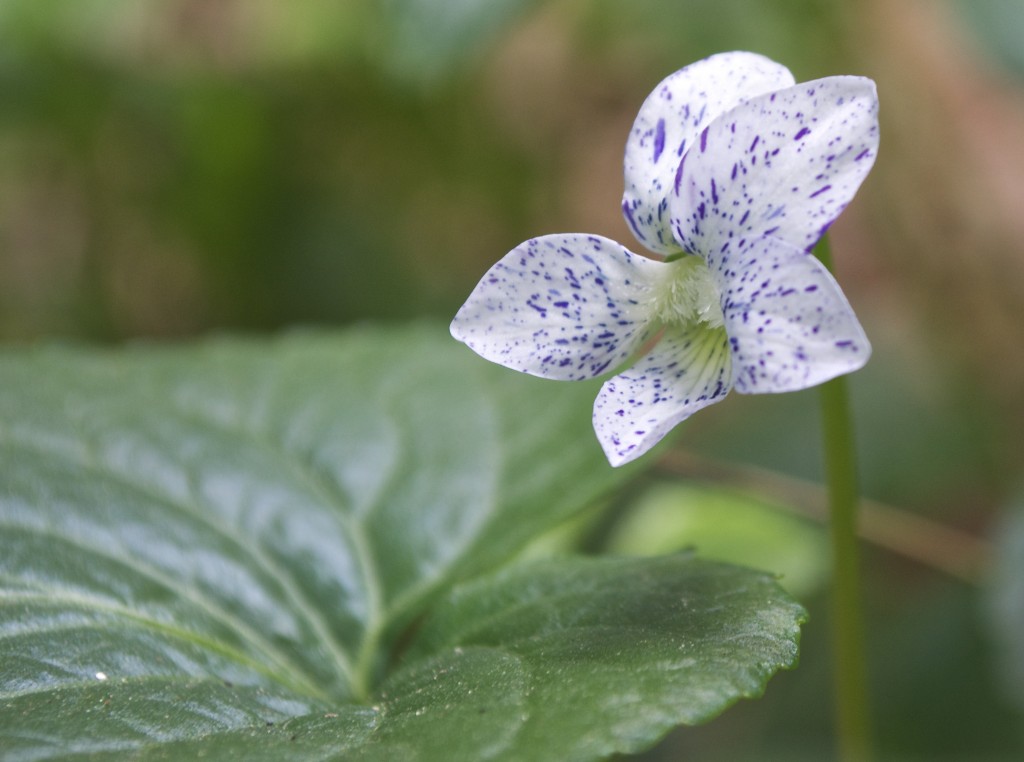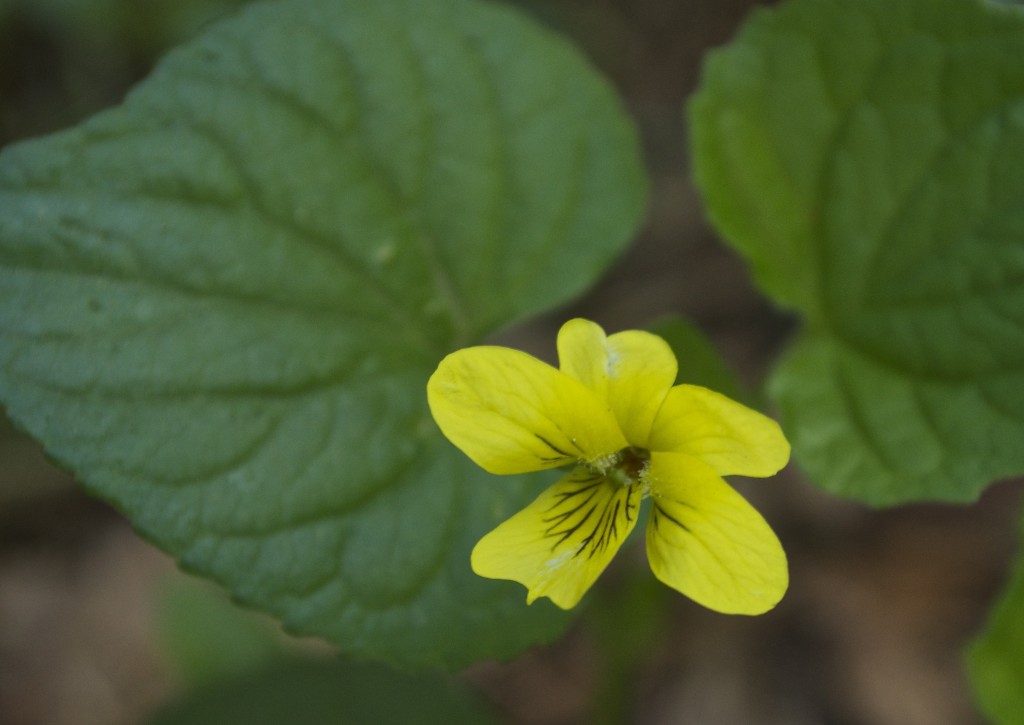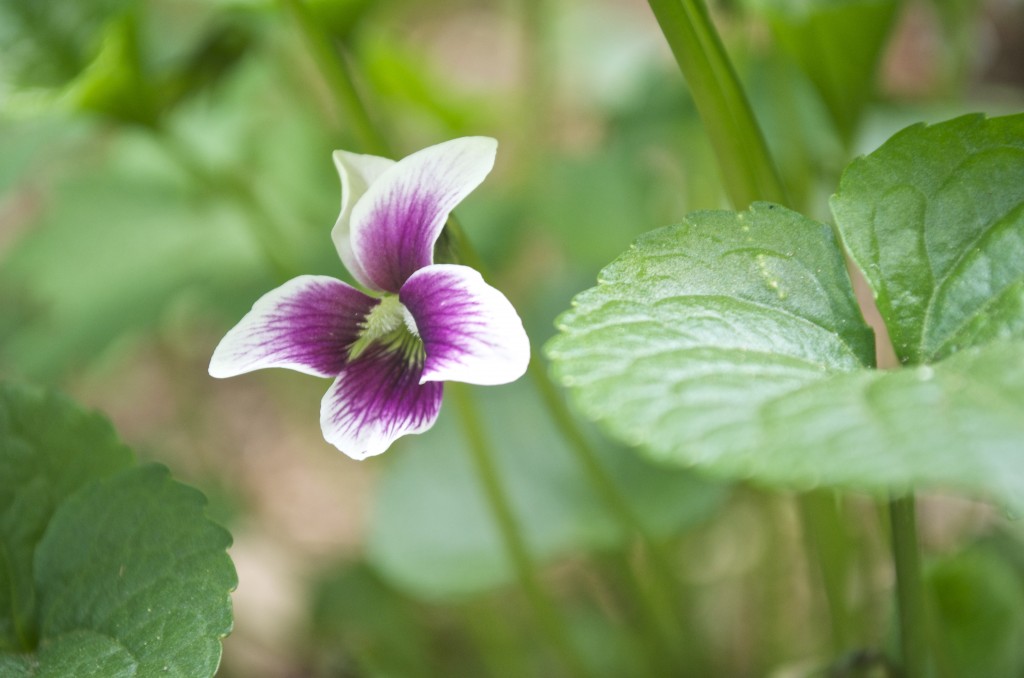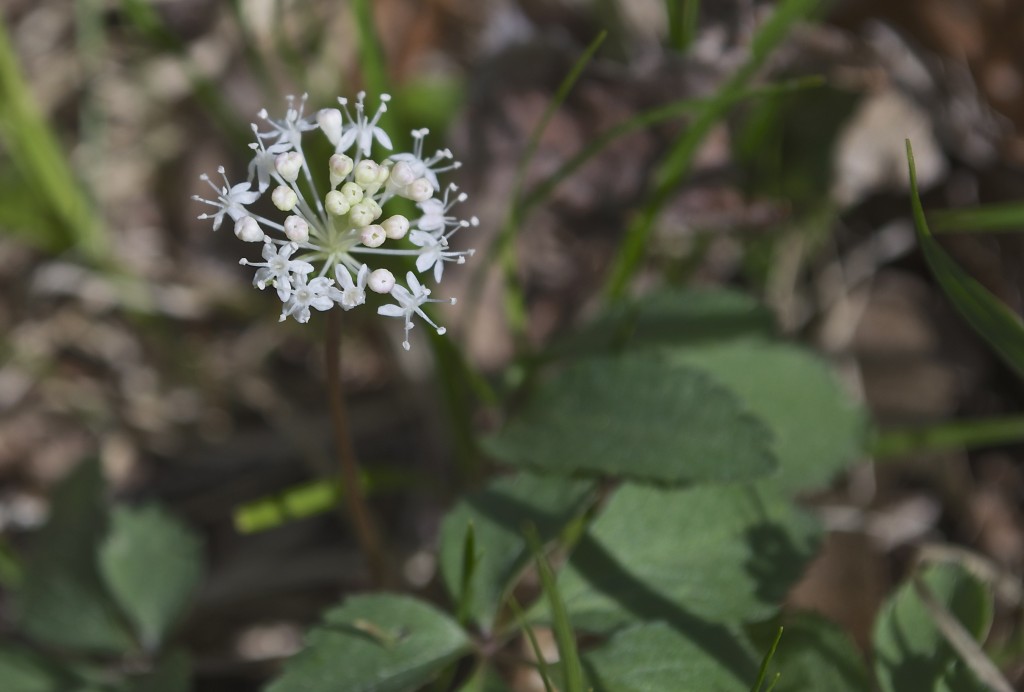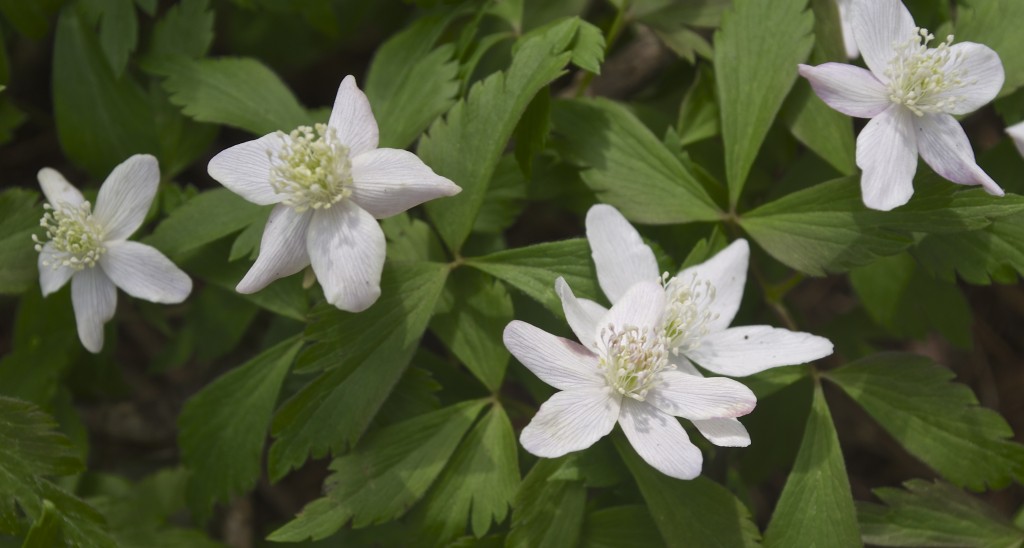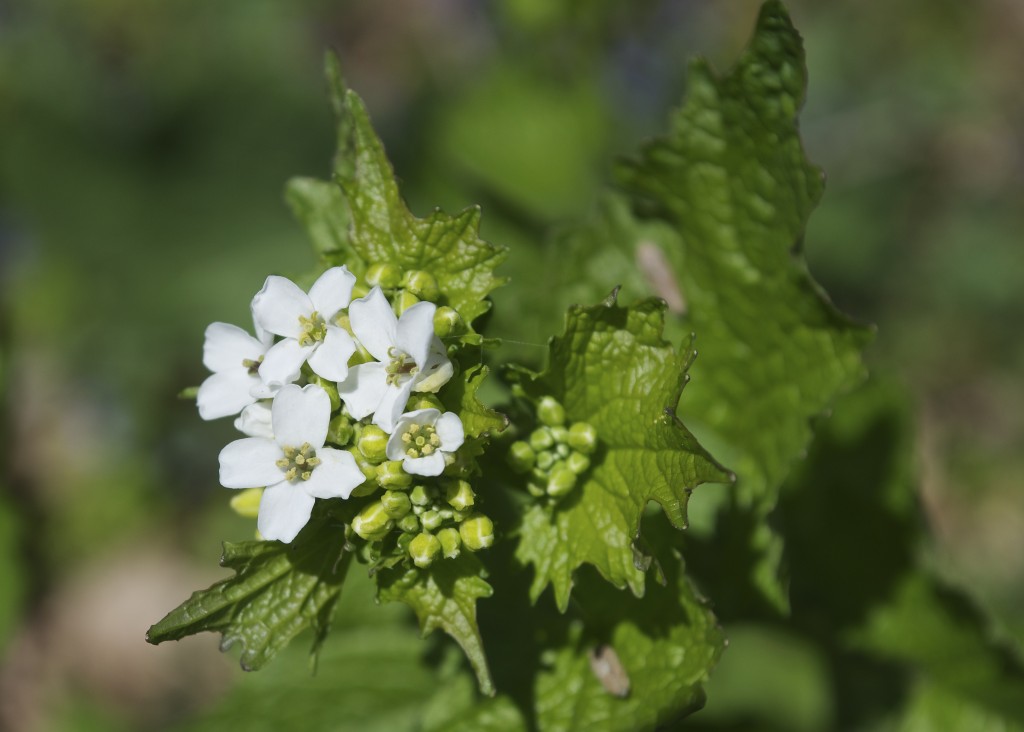Looking at plants that resemble each other… This Common Blackberry looks a lot like the multiflora rose (previous post), but without the yellow stamens. I’ve read that blackberries were found in the stomach of a body found preserved in a Danish bog (Haraldskaer Woman), dated to 490 BC. So people have been eating them for thousands of years. Native. Rose family. (June 4)
Common Blackberry (Rubus allegheniensis)

